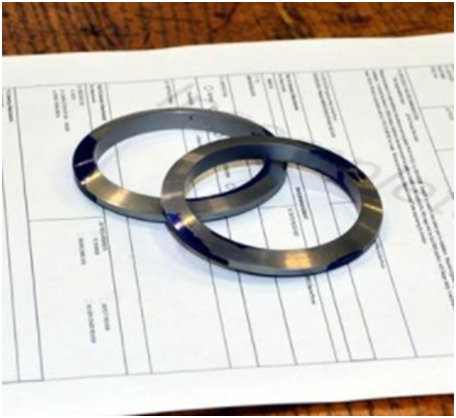
Charles R. Goulding and Ryan Donley examine Air Force demand for reverse engineering using 3D scanning and 3D printing.
The U.S. Air Force has begun 2021 by announcing that it needs 3D scanner technology for America’s aging air fleet and it needs it fast. The Air Force already makes extensive use of 3D printing for both parts and design research including embedded electronics.
Will Roper, Assistant Secretary for Acquisitions, Technology and Logistics, described the extensive use of 3D printing for a wide variety of weapon systems, including for the new United States Space Force, satellites and propulsion. According to Roper:
“Additive and advanced manufacturing (has) been going like gangbusters across the Air Force and Space Force — printing thousands of parts for airplanes, we’re starting to print parts for satellites, including propulsion.”
The Air Force’s important needs are to 3D print obsolete parts that are no longer available and for on-duty warfighters that need to be immediately returned to service. The scanner project is a high priority which is evident from the fast response deadlines for this procurement as the Air Forced in 2020 alone 3D printed over 1,500 parts for weapon systems – which was a 59% increase from the same processes in 2019.
The challenge is going to be instituting policies that protect the intellectual property of aerospace and defense contractors. With parts typically having very high profit margins, parts suppliers aren’t going to stand by after making their own tremendous investments in new part design and production and first article qualification and let their assets be appropriated.
Examples of Air Force 3D Printing
In light of military services being urged to experiment with 3D printing to save time and money in manufacturing, the Air Force has been delivering. Recently, the Air Force has been quite successful in testing and implementing 3D printed parts across their numerous programs.
A particular milestone part developed was an anti-ice gasket which is now the first successful 3D printed metal part inside a U.S. Air Force engine. This part, which was in such short supply and was both difficult and expensive to manufacture, has represented a substantial leap in the Air Force’s capabilities to resolve supply chain issues and fight the challenges associated with replacing aging aircraft components that are no longer in supply.

The Air Force and GE are also in collaboration on metal additive manufacturing and seek to reach another milestone in developing a 3D printed sump cover for the F110 engine. The efforts together of GE and the Air Force aim to adopt metal 3D printed parts to solve current and future sustainment challenges and provide methods to source parts quickly with sustained life cycles.
The Research & Development Tax Credit
Whether it’s used for creating and testing prototypes or for final production, 3D printing is a great indicator that R&D Credit eligible activities are taking place. Companies implementing this technology at any point should consider taking advantage of R&D Tax Credits.
Enacted in 1981, the now permanent Federal Research and Development (R&D) Tax Credit allows a credit that typically ranges from 4%-7% of eligible spending for new and improved products and processes. Qualified research must meet the following four criteria:
- Must be technological in nature
- Must be a component of the taxpayer’s business
- Must represent R&D in the experimental sense and generally includes all such costs related to the development or improvement of a product or process
- Must eliminate uncertainty through a process of experimentation that considers one or more alternatives
Eligible costs include US employee wages, cost of supplies consumed in the R&D process, cost of pre-production testing, US contract research expenses, and certain costs associated with developing a patent.
On December 18, 2015, President Obama signed the PATH Act, making the R&D Tax Credit permanent. Beginning in 2016, the R&D credit can be used to offset Alternative Minimum tax for companies with revenue below $50MM and, startup businesses can obtain up to $250,000 per year in payroll tax cash rebates.
Conclusion
This 3D scanner request is going to have a major impact on the entire 3D printing industry. The Air Force employs thousands of plane maintenance technicians who often later enter the commercial sector. The commercial airplane industry should watch these developments closely.
